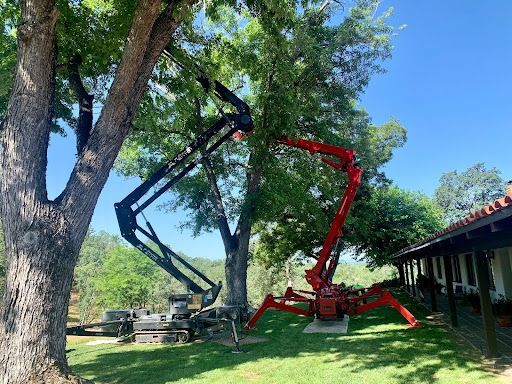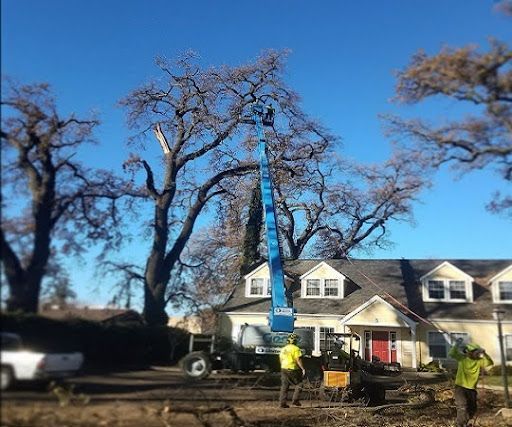Understanding the Seasons: When is the Best Time to Prune Trees?
Like clockwork, the seasons turn, painting the landscape in vibrant hues and dictating the rhythm of nature. For tree enthusiasts, understanding these seasonal shifts isn't just about appreciating the scenery – it's also key to knowing when to nurture and care for our leafy companions. One crucial aspect of tree care often sparks debate: Tree Pruning. When is the best time to prune? Can we wield our shears throughout the year, or should we follow a more nuanced approach, guided by the changing seasons?
The answer, like nature itself, isn't black and white. While tree pruning can be done strategically in specific situations year-round, there's a champion in the seasonal ring: the dormant season. This magical period, typically spanning late winter to early spring, offers a multitude of benefits for both you and your trees.
The Dormant Season: A Tree's Winter Rest
The dormant season, typically occurring during late fall and winter, is a crucial time in the life cycle of trees. This is when they undergo a period of rest, shedding leaves and conserving energy. Contrary to what some may believe, winter is the optimal time for tree pruning. During this period, trees are less susceptible to diseases and pests, making it the ideal time to perform maintenance without causing undue stress.
Why the Dormant Season Reigns Supreme for Tree Pruning:
Rest and Recuperation: During the
dormant season, trees have shed their leaves and entered a state of minimal activity. Their energy is focused on internal processes, making them less stressed and more resilient to the wounds inflicted by pruning. This translates to faster healing, minimizing the risk of diseases and pests entering the exposed tissues.
Clear Vision:
Without the leafy curtain obscuring the branches, the dormant season grants us unparalleled visibility. We can easily assess the tree's structure, identify dead, diseased, or damaged branches, and plan our pruning strategy with precision. This accuracy minimizes unnecessary cuts and promotes healthy growth in the right direction.
Growth Spurt:
Pruning during the dormant season stimulates new, vigorous growth in spring. When the energy reserves aren't channeled towards maintaining leaves, the tree focuses on healing the pruning wounds and pushing out fresh shoots. This results in a stronger, healthier canopy once spring arrives.
Weather Woes:
Winter's frigid temperatures deter most harmful insects and diseases. Pruning in the dormant season minimizes the risk of attracting these unwanted guests, further aiding your tree's recovery and reducing the need for chemical treatments.
Safety First:
When branches are bare, maneuvering around the tree and using pruning tools becomes significantly safer. You'll have better footing, clearer visibility, and less foliage to contend with, reducing the risk of accidents and falls.

Beyond the Dormant Season: Specific Considerations for Tree Pruning:
While the dormant season is the undisputed champion for tree pruning, there are a few exceptions and special cases to consider:
Evergreens:
These year-round beauties can benefit from light pruning and deadwood removal throughout the year. However, major pruning for shaping or size reduction is still best done in early spring before new growth appears.
Spring-Blooming Trees: For trees that showcase their floral splendor in spring, avoid
pruning during the dormant season. Wait until they've finished blooming to avoid compromising next year's flower show.
Emergency Situations: Broken branches or safety hazards can occur outside the ideal pruning window. Don't hesitate to address these issues immediately, regardless of the season.
By understanding the rhythms of the seasons and choosing the
best time to prune, you're not just wielding your shears – you're nurturing a vital connection with nature. You're helping your trees thrive, promoting a healthy ecosystem, and adding value to your outdoor haven. So, embrace the wisdom of the dormant season, grab your pruners with care, and witness the magic of new growth in spring, knowing you've played a vital role in its flourishing.
Contact About Trees Today!
Do you have questions
about tree pruning or need professional assistance?
Contact About Trees today! Our team of certified arborists can provide expert advice, safe and effective pruning services, and comprehensive tree care for all your arboreal needs. Let us help you cultivate a thriving landscape, season after season. Trust us to provide professional guidance and services to keep your green companions thriving. Give us a call or visit our website to schedule a consultation and take the first step towards ensuring the longevity of your trees.



